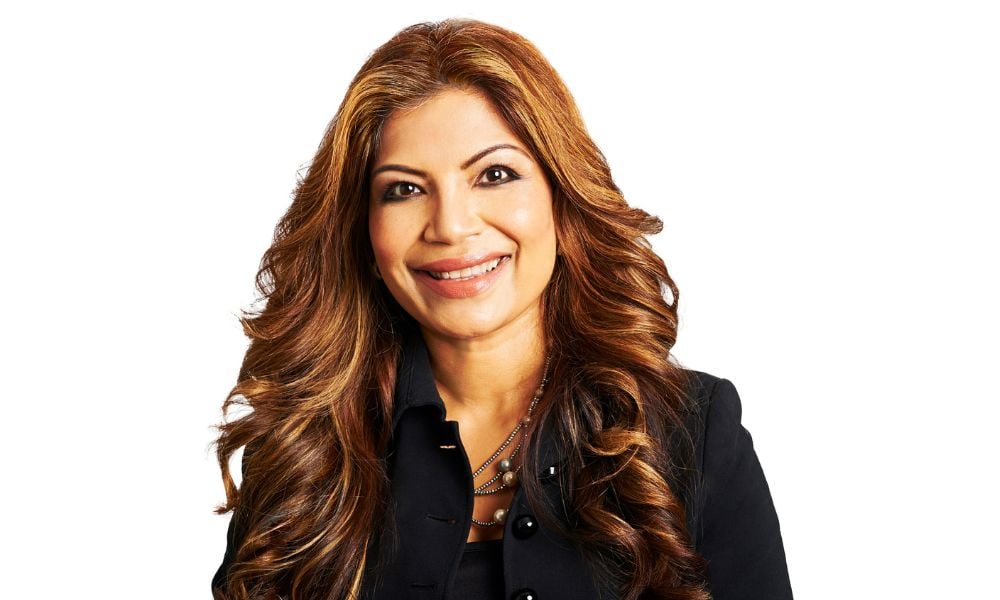
Soma Ray-Ellis explains why she doesn't think Canada will follow the US in rolling back initiatives

Diversity, equity and inclusion (DEI) initiatives in Canadian law firms aren’t under threat like in the United States, says Soma Ray-Ellis, partner and chair of the employment and labour law group at Gardiner Roberts LLP.
A specialist in discrimination investigations and human rights law, Ray-Ellis says that Canada’s DEI efforts were never built on affirmative action quotas or mandated outcomes, which is why there is less room for opponents to criticize those efforts.
“Our DEI policies are not based on quotas. They are based on the general principles that a society should treat all of its citizens fairly and equally – and not allow the systemic barriers that currently exist, whether they be based on race, gender, or ethnic origin, etc., to continue to work against people. Our goal is to make sure we have the best people in our workplaces and in our companies,” she says.
Ray-Ellis says there is a stark contrast between the Canadian and American models, pointing out that the fear surrounding DEI often comes from a fundamental misunderstanding of how these programs work in Canada.
“I think the attack is coming from south of the border, and it’s a misunderstanding of how Canadian DEI works,” she says.
“It’s fearmongering, and it’s a misstatement of what DEI is in Canada,” she says. “For the most part, it has never been an affirmative action or numbers-based program. It's always been an attempt to create an equal workplace devoid of discrimination so that the best and the brightest can succeed.”
While Canadian and US workplaces have instituted DEI policies, she says the approaches are notably different because of historical experiences, including unique legal and policy frameworks.
“That is why Canadian corporations are not dismantling their policies.”
Ray-Ellis says Canadian DEI is an inclusiveness and social responsibility issue – not a form of affirmative action.
“Our approaches to DEI have been defined by Canada’s multiculturalism policy dating back to the 1970s and enshrined in the Canadian Charter of Rights and Freedoms and the 1988 Canadian Multiculturalism Act, along with human rights legislation.”
She says this foundation reflects a broader national consensus. According to the 2020 General Social Survey, 92 percent of Canadians aged 15 years and older see ethnic or cultural diversity as a Canadian value.
Ray-Ellis says that in Canada, DEI policies are not tied to set-aside quotas in the way that has historically drawn criticism in the US higher education and corporate sectors.
“We haven’t had similar practices such as a portion of the jobs or entrances to universities being held for Black or [Hispanic people]. We also don’t have legacy university entrance programs where families who donated money to the universities can send their children without proper qualifications,” she says.
Instead, she adds, DEI in Canada is rooted in ensuring fair access and equal opportunities – not guarantees of proportional representation.
“The whole point of our DEI is actually to create a merit-based system, as opposed to being not counted or not included because of your race or your gender or your ethnic background, amongst other things.”
Amid increasing global scrutiny of DEI programs, particularly from political voices in the US, Ray-Ellis says Canadian organizations and professionals need to stay grounded in their context – and to act rather than become paralyzed by imported rhetoric.
“You can just spin out of control reading everything. But there’s no need to agonize. Let’s organize around the things that matter to us.”
She believes organizations that continue to invest in equitable hiring and development will be better positioned in the long run. “Organizations that stay focused on removing barriers and attracting top talent through fairness and equity will ultimately be stronger, more competitive, and more representative of Canada’s diverse society.”